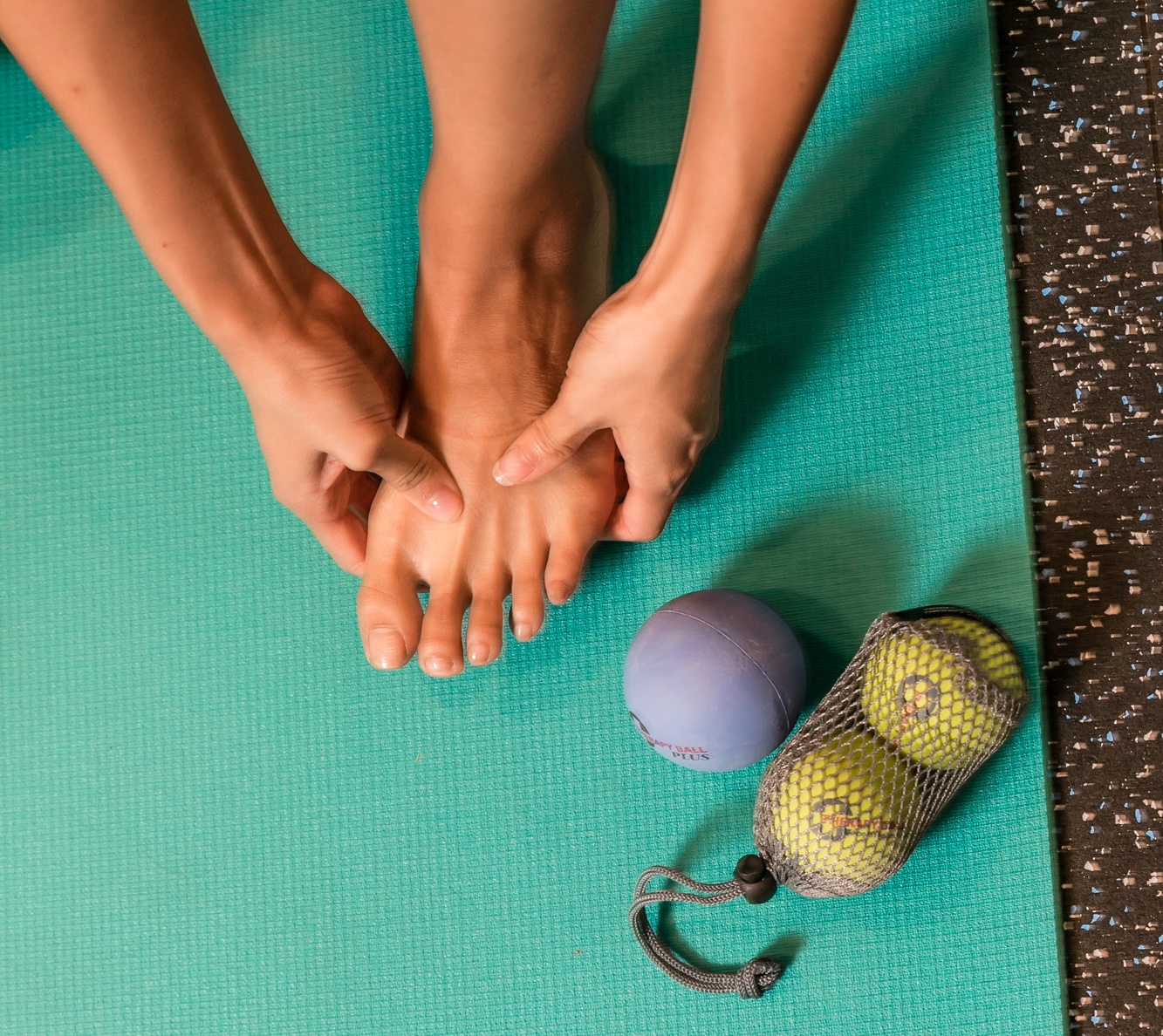
Becoming Your Own Health Care Provider: Strategies to Treat Your Sub-Clinical Aches & Pains (Videos)
“Dad, I think I have an alien in my belly,” is what a typical self-diagnosis sounded like when I was a little kid.
“Sweetie, I think you might just have gas, but let’s check the Merck Manual,” would likely have been my father’s reply. Then he’d create a potion for me to drink, or rub my tummy, and I’d go back outside to play.
From Self Diagnosis to Self Therapy
Like most kids, my brother and I grew up relying on our parents to help us decide if we needed a doctor visit or not. My dad was an ambulance driver in his young adult years and obsessed with all things medical. So he would whip out his copy of the Merck Manual when we had an ache or a pain.
For those of you unfamiliar, the Merck Manual, the world’s best selling medical textbook, is what physicians used to help diagnose back in the day. That is, before we started trying to do it ourselves with “Dr. Google.”
Nowadays people are still craving information about their aches, pains and overall health.
Which sends them to the internet for answers. But there aren’t appropriate filters on that information, and many of the sources are from well-intentioned creators with little-to-no clinical experience. These sources can be questionable to say the least. Blindly following their advice is not advised.
How to Help Yourself Get out of Pain

The answer might be found in the game I designed for my own kids years later. Through Yoga Tune Up® trainings and by becoming a Functional Movement Screen (FMS) practitioner, I’ve uncovered self-awareness practices that are simple enough even a kid can do them.
The Latin origin of the word Doctor is docere which means “to teach”.
When my kids would bring their aches and pains to me, we’d play “jungle doctor.” With a hands-off style and “educator” hat on, I first taught them about how their bodies worked. I’d show them where muscles and lines of pull were for their achy spots in my favorite anatomy book, Trail Guide to the Body.
Then I’d show them where each spot was on their body, using Dynaband stretch bands to mimic behavior of their muscles on top of their skin.
After that I would offer them specific techniques to try out. Sometimes I would teach them to do their own self palpation and massage with the Roll Model® Method therapy balls. Sometimes we stretched and it looked like yoga poses. Sometimes what I taught them looked a lot like a corrective exercise you would learn from a physical therapist.
These playful body learning sessions left them feeling empowered about their own amazing anatomy.
They found that with logic, care and willingness to learn, many times they could solve their own soft tissue pain problems. They also used what they learned as warm-up/warm-down activity before/after their sports practices in order to prevent future aches and pains.
Redefining the Word “Fix”
Having owned a yoga center for almost two decades, I’ve seen many adults come to yoga with “sub-clinical” pain or injury looking for relief: Neck pain, low back pain, hip pain, foot pain, shoulder pain… you name it. It all comes through my studio doors. Many relief-seekers have been sent to me by their doctor. The prevailing attitude that I see is people who are looking for a “fix.”
I encourage these relief-seekers to stop searching for a fast fix to pain problems and start focusing on another definition of the word “fix”: to direct one’s attention or mind steadily or unwaveringly toward.
Similarly, my onsite programming I bring to offices called the Self Therapy Clinic™ gives people the opportunity to practice becoming their own primary care practitioner.
Companies love it because they view it as preventative care that saves them money spent on healthcare. It’s not a quick fix, like you would think of a “minute clinic,” but rather it’s a meeting of the minds.
Together, we explore the aches, pains and range of motion issues in the body with unwavering fixed attention toward a more permanent solution to a physical pain problem.

So how can you become your own “Self Therapist”? How can you learn to treat yourself and manage your own sub-clinical pain, prevent injury, mitigate the effects of sitting or most effectively maximize your standing desk?
Get to Know Your Soft Tissue
Your soft tissues are muscles, fascias and joints interwoven with nerve or communication pathways. Your soft tissues are what gets stiff and sometimes painful from our daily activities, fitness pursuits and especially from lack of use.
For example, one CEO client gets “tight” between his shoulder blades from prolonged, seated computer work. He also figured his staff was suffering so he hired me to create office-appropriate movement breaks.
Another company needed some solutions to reduce their lower back injuries in their warehouse shipping & receiving area. So first we screened them with FMS to help the employees see more clearly how their body mechanics were affecting them–not just the job–and most importantly, get them actively sold on doing the corrective exercises I was teaching.
As you probably have experienced at one time or another, your soft tissues left untreated can become catalysts for pain, injury and reduced performance.
I love that through teaching others to study their bodies, I am able to inspire them to understand their pain and dysfunction and find the possibility of healing.
Here’s the thing: your body’s “smoke signals” of sub-clinical pain aren’t really a problem… yet. Think of them as an inner FitBit-like buzzer going off to ask you to do some movement or self massage, which is basically local body part/tissue movement.
Here’s one of my favorite combos to help, give it a try and comment below about any insights you have.
Video #1 Glute Awakening after Prolonged Sitting
Try this Roll Model®️ Method therapy ball sequence to bring awareness to your personal seat cushion–your glutes–after prolonged sitting.
https://www.youtube.com/watch?v=nKfh5ChFBJQ
Video #2 Gluteal Activation for Maximum Connectivity
Next, try this gluteal activation exercise to help connect mind and body in your gluteal tissues to help you transition from prolonged sitting to standing or walking.
https://www.youtube.com/watch?v=N3GE6g-UIKg&t=4s
As you explore your own Self Therapy practices, remember this: it doesn’t have to hurt to work. Think of movement as momentum toward the thing you want to do next.
When entering a meeting or stepping into the gym you want to feel mentally alert and physically primed. Implementing Self Therapy strategies will help you get yourself there.
These suggestions are not meant to replace the care of a doctor. Consult your doctor before beginning any movement, self-massage, or fitness practice.
Liked this article? Read When to Treat Yoself Like a Pro












I am always trying to find more ways to introduce PLAY in my adult classes. I cannot wait to try these self-awareness games and tactics with my group classes and private clients. I am all about preventative care and love teaching people about their bodies and helping them feel more confident and empowered. I tried these exercises and noticed immediate results in my stance, balance, and gate. I suffer from chronic hip and low back pain so these will be a great addition to my daily self-care routine!!! Thank you!
The pairing of the passive stretching of the self-massage with therapy balls and dynamic supported warrior 3 were an effective combo. Maneuvering the therapy balls was a bit tricky. Bending the knee of the moving leg felt like it helped to keep the ball on track. I’d like to try this using an Alpha ball on the wall instead of two toted classics and notice the differences. Doing the same exercise on the floor with either toted classic or Alpha ball could also increase the pressure. Although, since this series is designed for office workers lying on floor may not be an option. In the dynamic supported warrior 3 I could feel my gluteal activation more than when I do the classic stationary virabhadrasana 3. I like placing the hands on a chair or desk. It felt like I had more abdominal engagement and less compression. I would like to teach and practice this variation in class.
Really like the single leg hinge movement for glute activation and the rolling sequence. I have a lot of students who are desk bound all day and come to see me for a workout and this protocol will be perfect for them starting to incorporate ways to combat the effects of sitting for prolonged periods.
Great blog and demo videos from a true master!
Wow! That’s awesome empowering your kids with knowledge of their own bodies, and how to solve their own problems and prevent injury. And love your redefining of “fix” and your body “smoke signals”. And great videos!
Not only are folks self-empowered to help themselves feel better, this also can cut down on healthcare/insurance bills.
Bravo to you for inviting your children to understand their bodies. I could see significant benefit to incorporating this type of education into the curriculums for children and continuing it through high school.
Thanks for the short videos and reminder that doctor means to teach…oneself has the medicine and I appreciate you self empowering me!
Great blog/article Sandy! I greatly appreciate you sharing your knowledge.
EWS